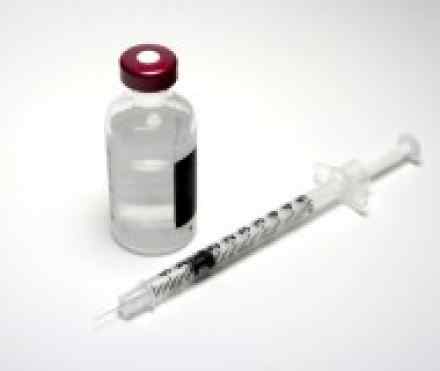
What is it?
- Diabetic ketoacidosis is a serious complication of diabetes that occurs when your body produces very high levels of blood acids called ketones.
- Diabetic ketoacidosis develops when you have too little insulin in your body. Insulin normally plays a key role in helping sugar (glucose) — a major source of energy for your muscles and other tissues — enter your cells. Without enough insulin, your body begins to breaks down fat as an alternate fuel.
Symptoms
Diabetic ketoacidosis signs and symptoms often develop quickly, sometimes within 24 hours. You may notice:
- Excessive thirst
- Frequent urination
- Nausea and vomiting
- Abdominal pain
- Loss of appetite
- Weakness or fatigue
- Shortness of breath
- Fruity-scented breath
- Confusion
More specific signs of diabetic ketoacidosis — which can be detected through home blood and urine testing kits — include:
- High blood sugar level
- High ketone level in your urine
Causes
Sugar is a main source of energy for the cells that make up your muscles and other tissues. Normally, sugar enters your cells with the help of insulin. If you don't have enough insulin in your body, your body won't be able to use sugar for energy. This prompts the release of hormones that break down fat as an alternate fuel. In turn, this process produces toxic acids known as ketones. Excess ketones accumulate in the blood and eventually "spill over" into the urine.
Diabetic ketoacidosis is usually triggered by:
- An illness. An infection or other illness can cause your body to produce certain hormones, such as adrenaline. Unfortunately, these hormones work against insulin — sometimes triggering an episode of diabetic ketoacidosis. Pneumonia and urinary tract infections are common culprits.
- A problem with insulin therapy. Missed insulin treatments or inadequate insulin therapy can leave you with too little insulin in your system, triggering an episode of diabetic ketoacidosis.
Other possible triggers of diabetic ketoacidosis may include:
- Stress
- Physical or emotional trauma
- High fever
- Surgery
- Heart attack
- Stroke
- Alcohol or drug abuse
Risk factors
The risk of diabetic ketoacidosis is highest if you:
- Have type 1 diabetes
- Are younger than age 19
However, diabetic ketoacidosis can occur in other situations — whether you have type 1 diabetes, type 2 diabetes or gestational diabetes. In a few cases, diabetic ketoacidosis is the first sign that a person has diabetes.
Complications
Diabetic ketoacidosis is treated with fluids, electrolytes — such as sodium, potassium and chloride — and insulin. Perhaps surprisingly, the most common complications of diabetic ketoacidosis are related to this lifesaving treatment:
- Low blood sugar (hypoglycemia). Insulin allows sugar to enter your cells. This causes your blood sugar level to drop. If your blood sugar level drops too quickly, you may develop low blood sugar.
- Low potassium (hypokalemia). The fluids and insulin used to treat diabetic ketoacidosis may cause your potassium level to drop too low. A low potassium level can impair the activities of your heart, muscles and nerves.
- Swelling in the brain (cerebral edema). Adjusting your blood sugar level too quickly can produce swelling in your brain. This complication appears to be more common in children, especially those who have newly diagnosed diabetes.
Left untreated, the risks are much greater. Diabetic ketoacidosis can lead to loss of consciousness. Eventually, diabetic ketoacidosis can be fatal.
Diagnosis
If your doctor suspects diabetic ketoacidosis, he or she will do a physical exam and various blood tests. In some cases, additional tests may be needed to help the doctor determine what triggered the episode of diabetic ketoacidosis or what damage the ketoacidosis may have caused.
Blood tests
Blood tests used in the diagnosis of diabetic ketoacidosis will measure:
- Blood sugar level. If there isn't enough insulin in your body to allow sugar to enter your cells, your blood sugar level will rise (hyperglycemia). As your body breaks down fat and protein for energy, your blood sugar level will continue to rise.
- Ketone level. When your body breaks down fat and protein for energy, toxic acids known as ketones enter your bloodstream.
- Blood acidity. If you have excess ketones in your blood, your blood will become acidic (acidosis). This can damage organs throughout your body.
Additional tests
Your doctor also may order tests to identify underlying health problems that may have contributed to diabetic ketoacidosis and check for complications. Tests may include:
- Blood electrolyte tests
- Urinalysis
- Chest X-ray
- A recording of the electrical activity of the heart (electrocardiogram)
Treatments and drugs
If you're diagnosed with diabetic ketoacidosis, you may be treated in the emergency room or admitted to the hospital. Treatment is usually a three-pronged approach:
- Fluid replacement. You'll receive fluids — either orally or through a vein (intravenously) — until you're rehydrated. The fluids will replace those you've lost through excessive urination, as well as help dilute the excess sugar in your blood.
- Electrolyte replacement. Electrolytes are minerals in your blood that carry an electric charge, such as sodium, potassium and chloride. The absence of insulin can lower the level of several electrolytes in your blood. You'll receive electrolytes through your veins to help keep your heart, muscles and nerve cells functioning normally.
- Insulin therapy. Insulin reverses the processes that cause diabetic ketoacidosis. Along with fluids and electrolytes, you'll receive insulin therapy — usually through a vein. When your blood sugar level falls below 240 mg/dL (13.3 mmol/L) and your blood is no longer acidic, you may be able to stop intravenous insulin therapy and resume your normal insulin therapy.
As your body chemistry returns to normal, your doctor will consider what may have triggered the episode of diabetic ketoacidosis. Depending on the circumstances, you may need additional treatment. For example, if you have undiagnosed diabetes, your doctor will help you create a diabetes treatment plan. If your doctor suspects a bacterial infection, he or she may prescribe antibiotics. If a heart attack seems possible, your doctor may recommend further evaluation of your heart.
Prevention
There's much you can do to prevent diabetic ketoacidosis and other diabetes complications.
- Make a commitment to managing your diabetes. Make healthy eating and physical activity part of your daily routine. Take oral diabetes medications or insulin as directed.
- Monitor your blood sugar level. You may need to check and record your blood sugar level at least several times a day — or more if you're ill or under stress. Careful monitoring is the only way to make sure that your blood sugar level remains within your target range.
- Adjust your insulin dosage as needed. Talk to your doctor or diabetes educator about how to adjust your insulin dosage depending on your blood sugar level, what you eat, how active you are, whether you're ill and other factors. If your blood sugar level begins to rise, follow your diabetes treatment plan to return your blood sugar level to your target range.
- Check your ketone level. When you're ill or under stress, test your urine for excess ketones with an over-the-counter urine ketones test kit. If your ketone level is moderate or high, contact your doctor right away or seek emergency care.
- Be prepared to act quickly. If you suspect that you have diabetic ketoacidosis — your blood sugar level is high and you have excess ketones in your urine — seek emergency care.
Diabetes complications are scary. But don't let fear keep you from taking good care of yourself. Follow your diabetes treatment plan carefully, and ask your diabetes treatment team for help when you need it.
References:
http://www.merckmanuals.com/professional/endocrine-and-metabolic-disorders/diabetes-mellitus-and-disorders-of-carbohydrate-metabolism/diabetic-ketoacidosis-dka
http://www.diabetes.org/living-with-diabetes/complications/ketoacidosis-dka.html
https://en.wikipedia.org/wiki/Diabetic_ketoacidosis
http://emedicine.medscape.com/article/118361-overview
https://www.nlm.nih.gov/medlineplus/ency/article/000320.htm
http://www.nhs.uk/conditions/diabetic-ketoacidosis/Pages/Introduction.aspx
http://www.emedicinehealth.com/diabetic_ketoacidosis/article_em.htm




